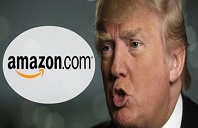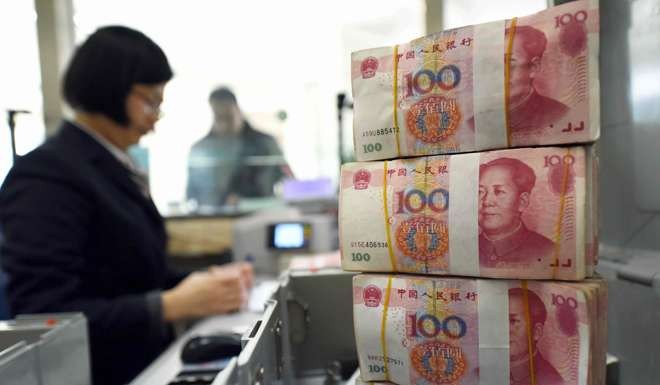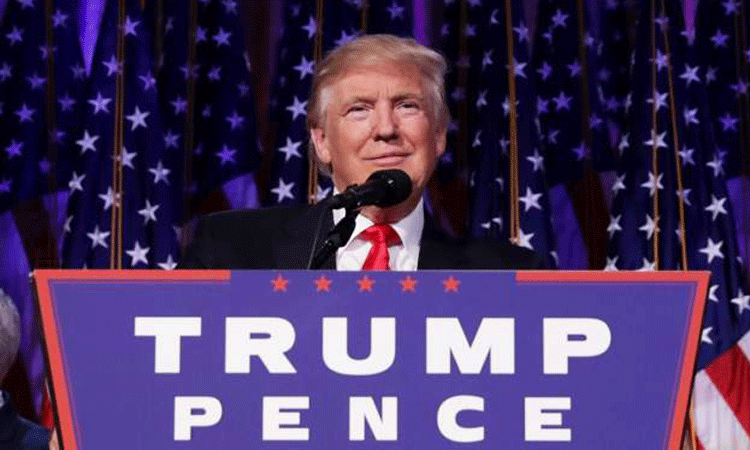Trump says China is not a market economy. That’s a big deal.
Way back in 2001, in China’s view, the United States promised it would treat the Asian country as a “market economy” starting in December 2016. President-elect Donald Trump indicated on Dec. 8 that “China is not a market economy,” and the issue could escalate already-tense trade relations between Beijing and Washington.
When China joined the World Trade Organization (WTO) in 2001, it agreed that other WTO members could decide its “non-market economy” (NME) status. In a socialist country such as China, the government — and not the profit motive or “markets” — dictate economic outcomes. Chinese price and quantity statistics were somewhat meaningless.
But trade agreements require governments to make meaningful comparisons of prices in one country to prices or costs in another. NME status became the workaround that made possible trade cooperation between market economies and a socialist country.
How NME status helps the United States
The bottom line, however, is that NME status also made it easier for the United States to restrict imports from Chinese companies. Here’s how it works, using the case of hydrofluorocarbons (HFCs) as an example.
HFCs are a chemical coolant utilized in refrigerators and air-conditioning units — like those produced by Carrier. HFCs also are a greenhouse gas. They are such a significant contributor to climate change that experts pushed earlier this year for the new, multilateral Kigali Amendment, which mandates countries rein in use of HFCs.
In 2015, U.S. HFC manufacturers, as well as their labor union, argued that HFCs imported from China were being sold in the United States at unfairly low prices. Their official complaint alleged that these “dumped” imports — valued at more than $100 million per year — injured American firms and threatened U.S. jobs.
The coalition asked U.S. trade officials to open a formal investigation under U.S. anti-dumping law.
If the foreign companies had been from a market economy — such as Canada — U.S. trade officials would then compare the HFC import prices either with the prices for HFCs sold in Canada or with the Canadian HFC companies’ actual production costs.
NME status meant China received different treatment — U.S. trade officials had the flexibility to assess production of HFCs taking place in a completely different market. In this case, Mexican companies provided the “surrogate” example that the U.S. government used to determine the Chinese companies’ true costs. After their investigation, U.S. trade officials imposed additional tariffs — anti-dumping duties — of more than 100 percent on imports from China, to help keep U.S. HFCs competitive.
What’s the NME controversy?
While China agreed in 2001 to this NME distinction, Beijing interpreted its WTO membership to mean that the United States would automatically revoke NME status in December 2016. Public statements by senior U.S. officials at the time — including the testimony of Charlene Barshefsky, then the U.S. trade representative, before Congress — certainly helped form this Chinese impression.
In exchange for NME status, China was able to join the WTO, which meant its exporters otherwise were granted the same treatment as that enjoyed by companies in more than 160 member countries.
About 100 Chinese products face U.S. anti-dumping duties
China argues that NME treatment, and Washington’s ability to rely on surrogate country data, leads to high U.S. tariffs on Chinese exports — and lower sales in the United States. Through 2015, I estimate that 7 percent of Chinese exports to the United States, or about $35 billion in annual trade, were subject to these U.S. import restrictions. They fall on a range of imported products beyond HFCs, including steel, solar panels, wind towers, paper, furniture and shrimp.
Yet China’s exports to the United States have increased nearly fourfold in the 15 years since it joined the WTO. And as of 2015, Chinese companies sold the remaining 93 percent of their U.S.-bound exports, worth about $465 billion, under normal conditions that were unaffected by NME treatment.
So China’s decision to allow others to treat it as a NME appears to have been a decent bargain for China.
From the U.S. perspective, would the end of NME status suddenly unleash an additional $35 billion in Chinese exports onto the U.S. market? Probably not, because U.S. trade officials have another approach.
In anticipation of 2016, the United States developed a separate policy under its countervailing duty (CVD) law, in case revocation of China’s NME status makes it too cumbersome to utilize anti-dumping.
CVDs address a related concern — that the low price of an import may stem from illegal foreign subsidies. Since a 2007 U.S. policy reversal that allowed companies to file CVD cases against China, most U.S. anti-dumping cases involving China have been accompanied by a simultaneous use of CVDs. In fact, the HFCs anti-dumping case was one of the exceptions. I estimate that more than two-thirds of U.S. imports from China covered by anti-dumping as of 2015 were also covered by CVDs.
This issue is important because of the heightened U.S. political sensitivity about low-priced imports, especially given the evidence that imports from China have negatively affected some U.S. workers and communities.
So why doesn’t the United States just grant China market economy status today?
There are at least two issues here:
1) Keeping the tools to protect U.S. companies: The United States is unlikely to give up NME use under anti-dumping without some legal assurance — from China and the WTO — that it retains access to another policy, such as CVDs. But China has made numerous formal WTO challenges to U.S. CVD use since 2007, and WTO judges have yet to settle on the legal implications for U.S. policy.
2) Deciding whether China is actually a market economy: Economists such as Nicholas Lardy point out that major reforms over the past 20 years effectively reduced the size and role of the state in the Chinese economy.
Many others, including the U.S. government, argue that China’s economic transformation has not gone far enough. Mark Wu, a Harvard law professor, describes how a “China Inc.” has emerged. The Chinese government and the Communist Party have made strategic adjustments but remain actively involved in banking, energy and raw materials — and this allows them to implicitly subsidize other sectors of the economy.
In a country long accustomed to state secrecy, China’s continued lack of transparency raises uncertainty on the scope of its economic transformation. How much does government support distort Chinese economic outcomes — on prices and quantities — away from what free markets would decide? Where does this spillover negatively affect the U.S. economy? Answers to these questions would help identify situations when it would be acceptable for U.S. policies to address this type of unfair trade advantage.
The immediate political outcome?
Because NME status is likely to require a negotiated solution between the United States and China, it is unlikely to be resolved anytime soon.
In the immediate future, Beijing is likely to file a WTO dispute against the United States, to present the case to an impartial arbitrator that China was promised market economy treatment would begin in 2016.
However, Beijing could also retaliate outside of the WTO system, like its 2009 response to U.S. policy decisions. Back then, China began imposing WTO-inconsistent tariffs on U.S. exports of poultry, autos and specialty steel. At its 2011 peak, this retaliation covered nearly 8 percent of U.S. exports to China.
The international trading system managed to withstand the 2009-2011 episode. Nevertheless, any acts by Beijing or Washington to heighten trade tensions today may be riskier, given the already fragile environment brought on by the 2016 U.S. presidential election.
(Source: washingtonpost.com Author: Chad P. Bown)


























 沪公网安备31010402003309号
沪公网安备31010402003309号